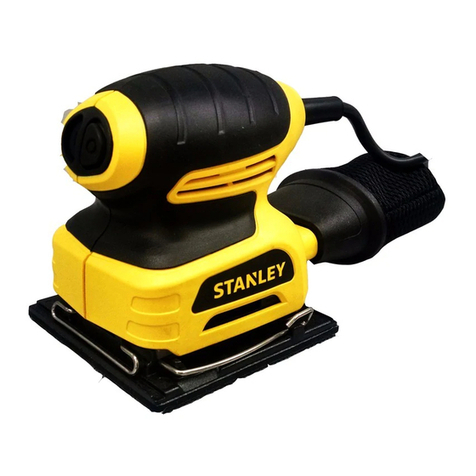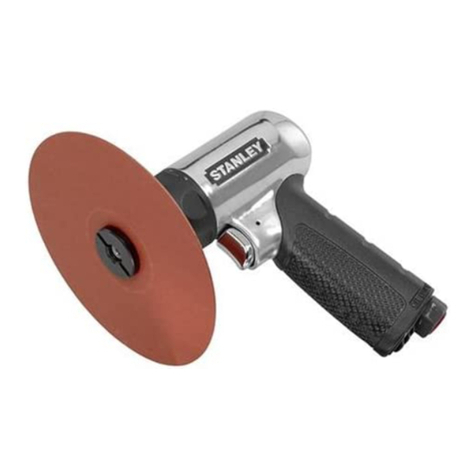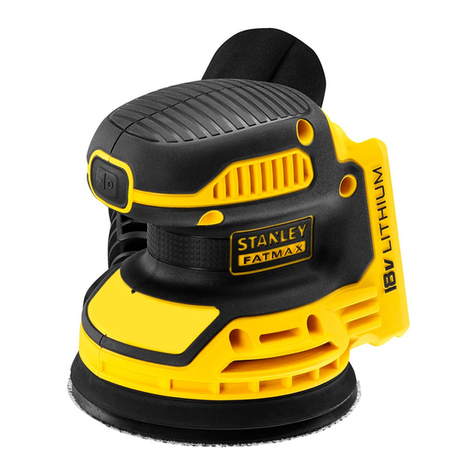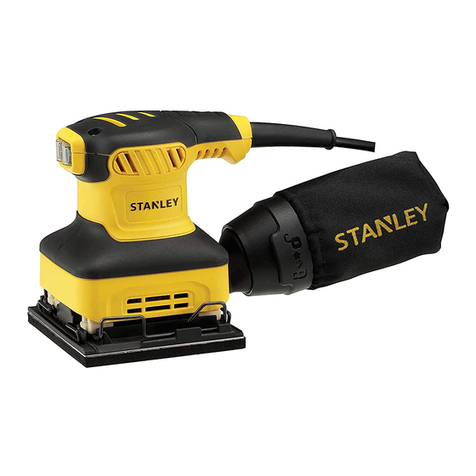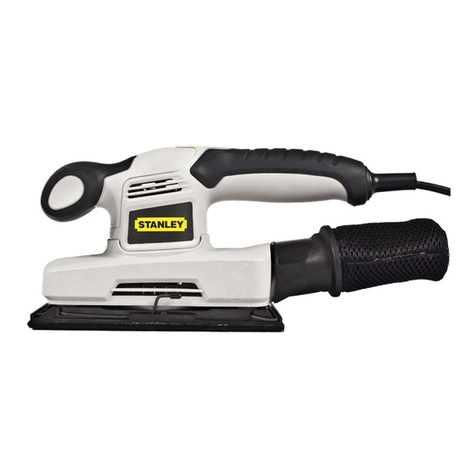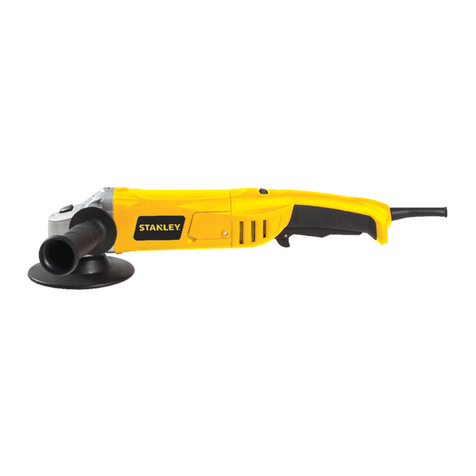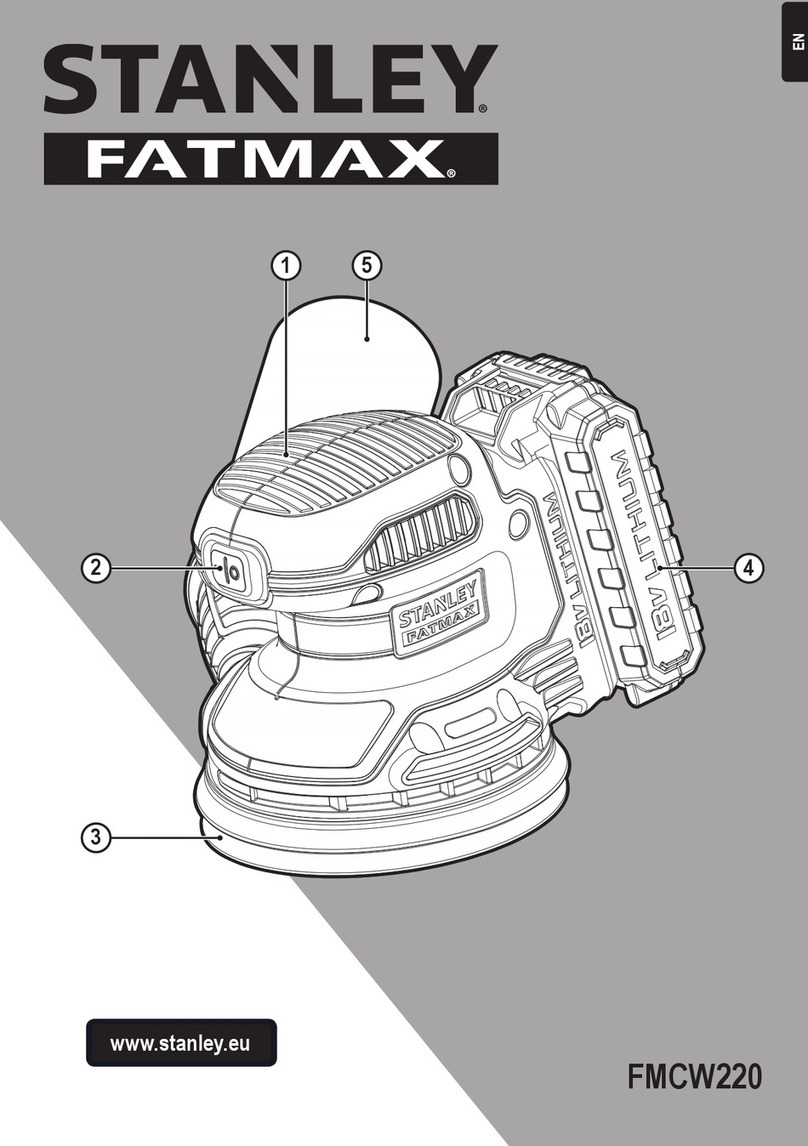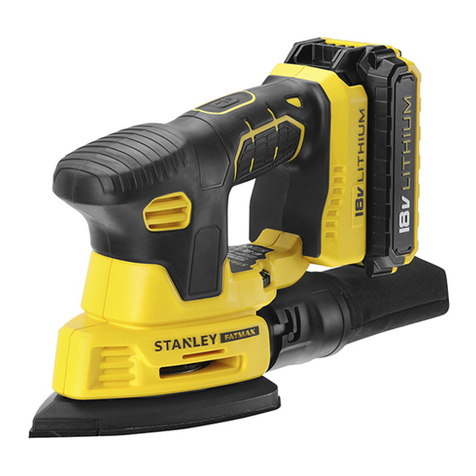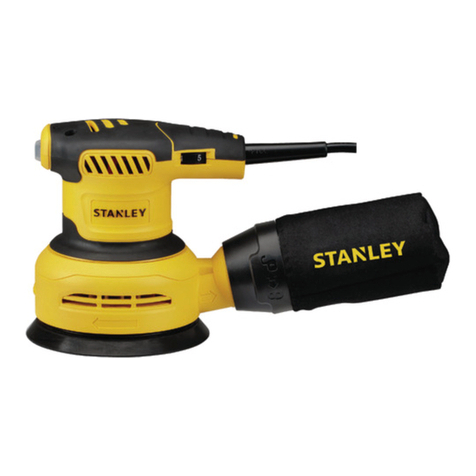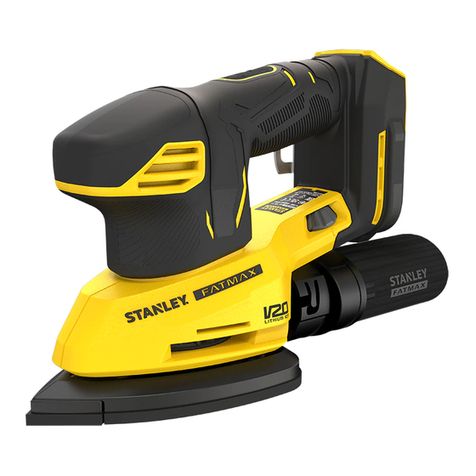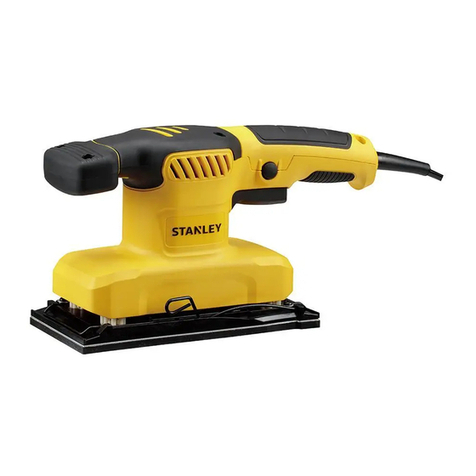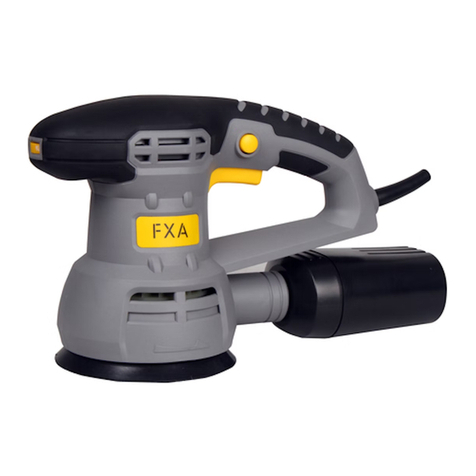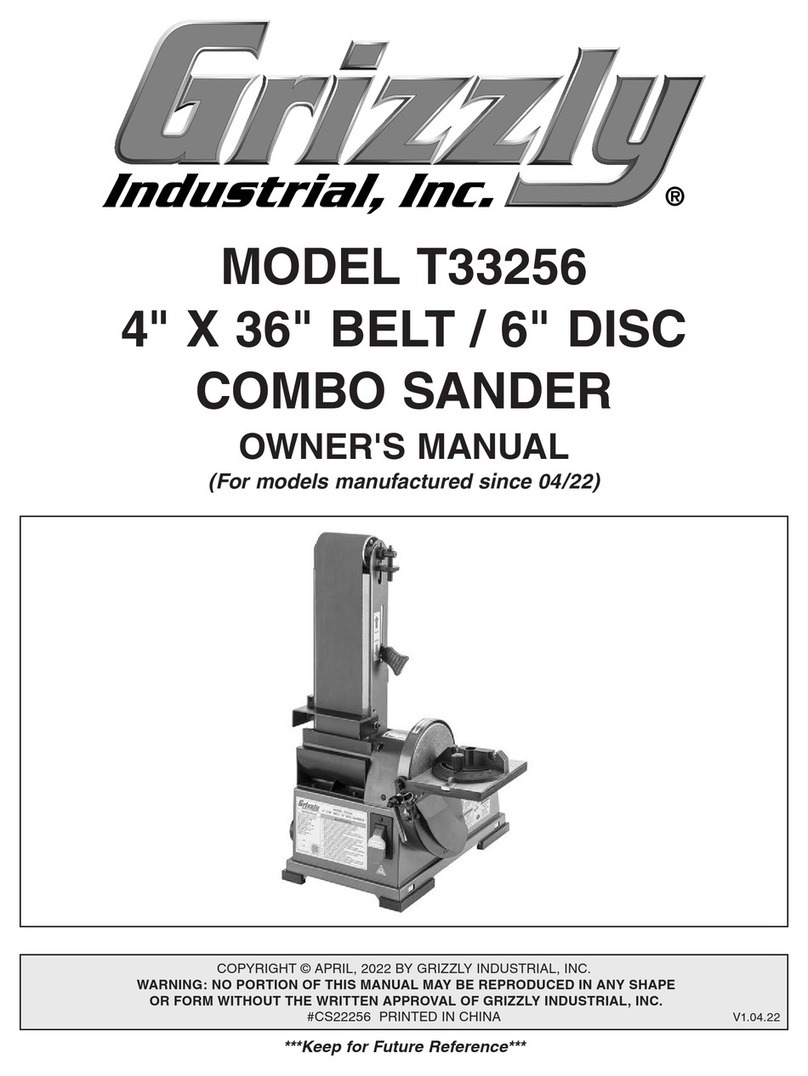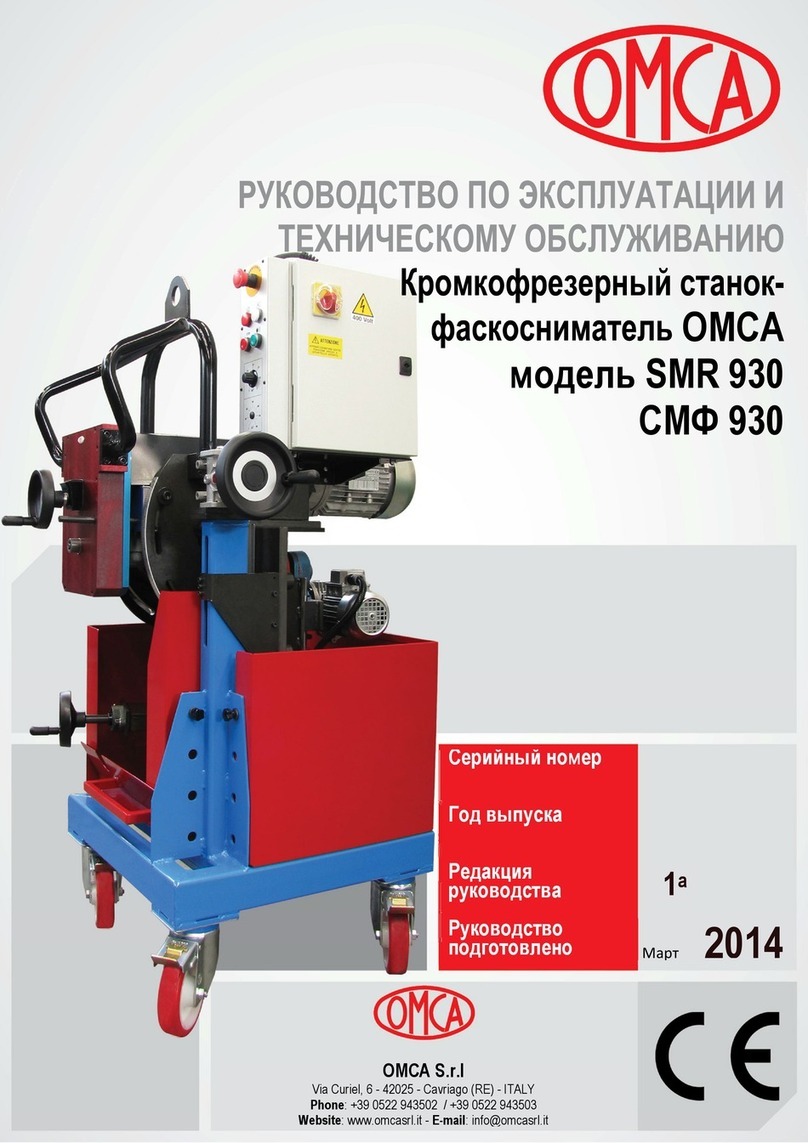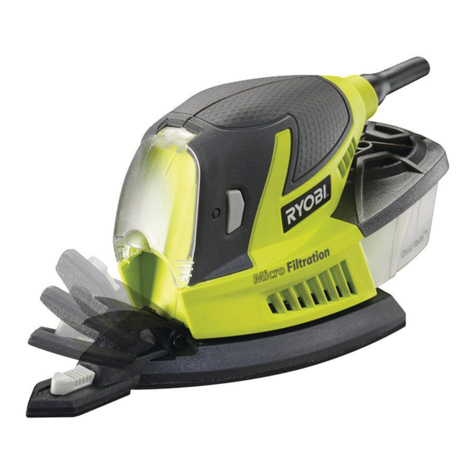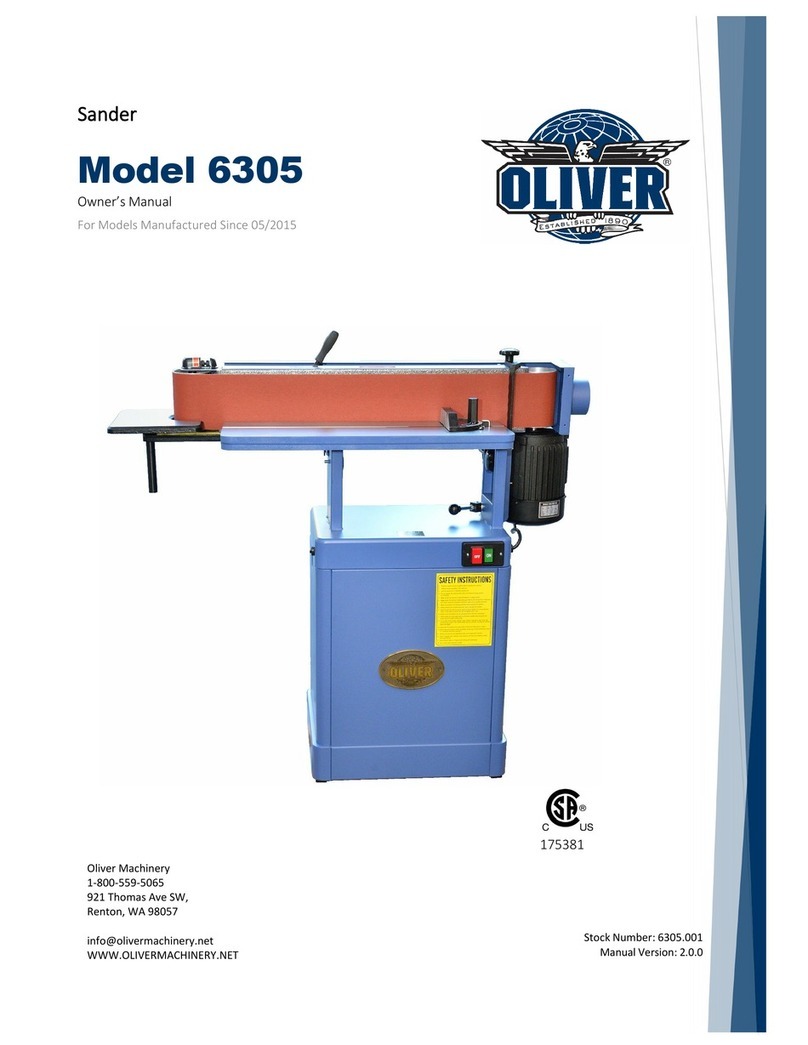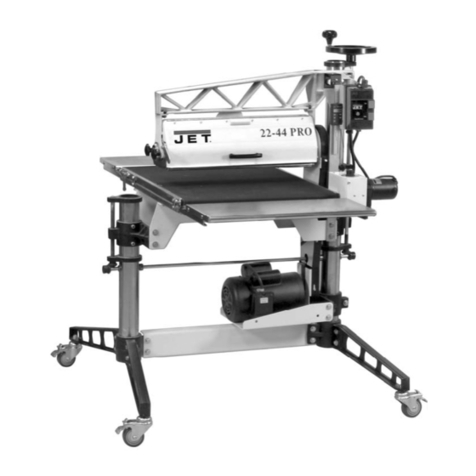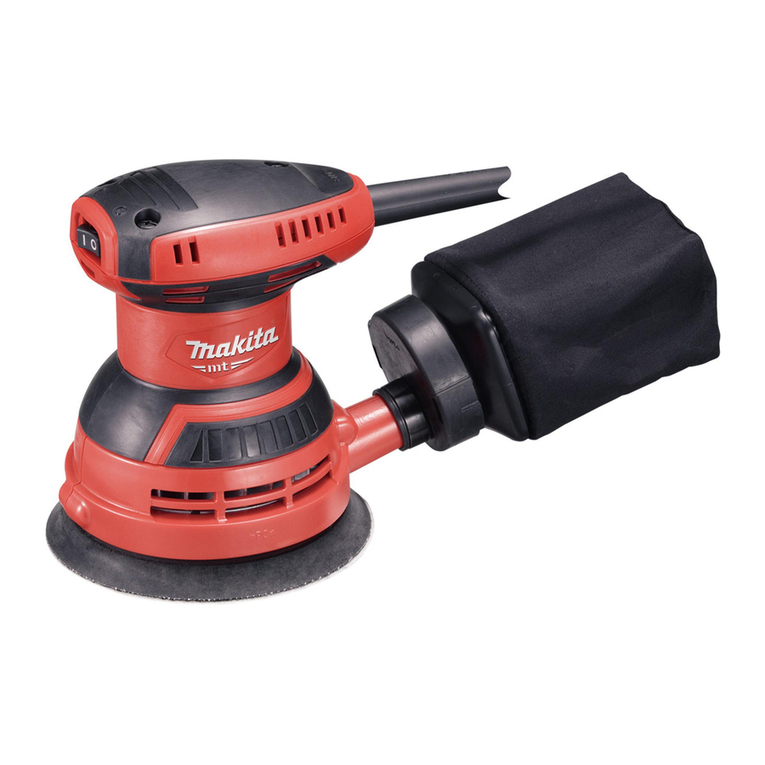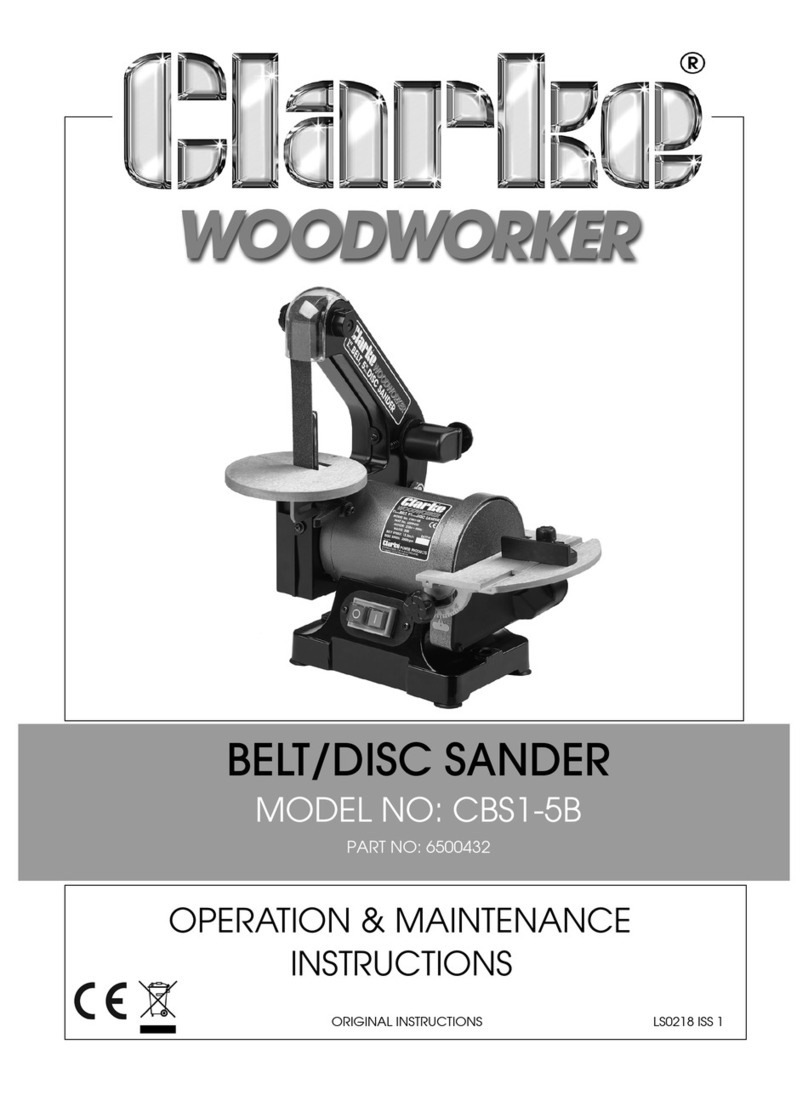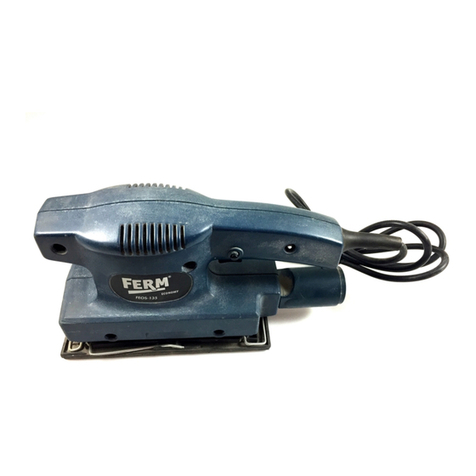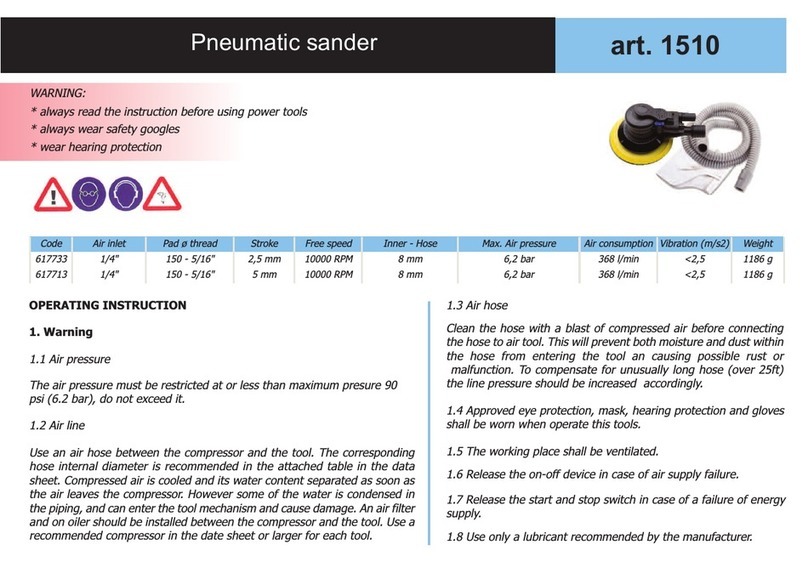
5
ENGLISH
4. Power tool use and care
a. Do not force the power tool. Use the correct power
tool for your application. The correct power tool will do
the job better and safer at the rate for which it was
designed.
b. Do not use the power tool if the switch does not turn it
on and off. Any power tool that cannot be controlled with
the switch is dangerous and must be repaired.
c. Disconnect the plug from the power source and/or the
battery pack from the power tool before making any
adjustments, changing accessories, or storing power
tools. Such preventive safety measures reduce the risk of
starting the power tool accidentally.
d. Store idle power tools out of the reach of children and
do not allow persons unfamiliar with the power tool or
these instructions to operate the power tool. Power
tools are dangerous in the hands of untrained users.
e. Maintain power tools. Check for misalignment or
binding of moving parts, breakage of parts and any
other condition that may affect the power tools
operation. If damaged, have the power tool repaired
before use. Many accidents are caused by poorly
maintained power tools.
f. Keep cutting tools sharp and clean. Properly
maintained cutting tools with sharp cutting edges are less
likely to bind and are easier to control.
g. Use the power tool, accessories and tool bits etc. in
accordance with these instructions, taking into
account the working conditions and the work to be
performed. Use of the power tool for operations different
from those intended could result in a hazardous situation.
5. Service
a. Have your power tool serviced by a qualied repair
person using only identical replacement parts. This
will ensure that the safety of the power tool is maintained.
Additional safety instructions for sanders
• Hold power tool by insulated gripping surfaces,
because the belt may contact its own cord. Cutting a
"live" wire may make exposed metal parts of the power
tool "live" and could give the operator an electric shock.
• Warning! Contact with or inhalation of dusts arising from
sanding applications may endanger the health of the
operator and possible bystanders. Wear a dust mask
specifically designed for protection against dust and fumes
and ensure that persons within or entering the work area
are also protected.
• Thoroughly remove all dust after sanding.
• Take special care when sanding paint which is possibly
lead based or when sanding some woods and metal which
may produce toxic dust:
- Do not let children or pregnant women enter the work
area.
- Do not eat, drink or smoke in the work area.
- Dispose of dust particles and any other debris safely.
Electrical safety
This tool is double insulated; therefore no earth
wire is required. Always check that the power
supply corresponds to the voltage on the rating
plate.
WARNING! If the power cord is damaged, it
must be replaced by the manufacturer, autho-
rized STANLEY Service Center or an equally
qualied person in order to avoid damage
or injury. If the power cord is replaced by an
equally qualied person, but not authorized by
STANLEY, the warranti will not be valid..
Residual Risks
In spite of the application of the relevant safety regulations and
the implementation of safety devices, certain residual risks
cannot be avoided.
These are:
– Impairment of hearing.
– Risk of personal injury due to flying particles.
– Risk of burns due to accessories becoming hot during
operation.
– Risk of personal injury due to prolonged use.
LABELS ON TOOL
The label on your tool may include the following symbols along
with the date code:
WARNING: To reduce the risk of injury, the
user must read the instruction manual.
Use Eye Protection.
Use Ear Protection.
POSITION OF DATE CODE
The Date Code, which also includes the year of manufacture, is
printed into the housing.
Example:
2016 XX JN
Year of manufacturing
